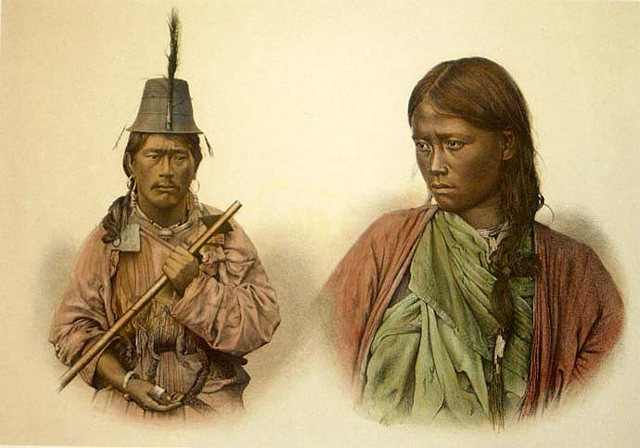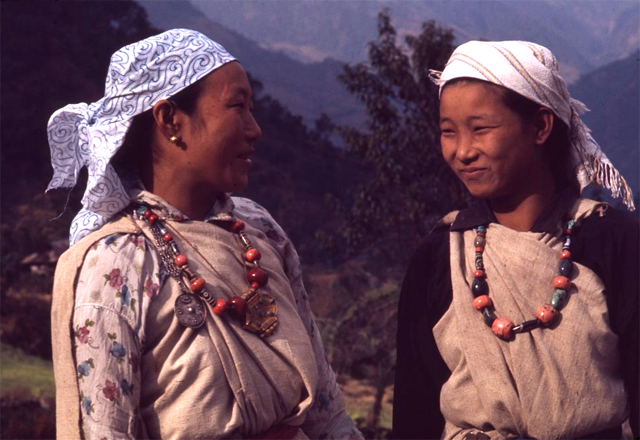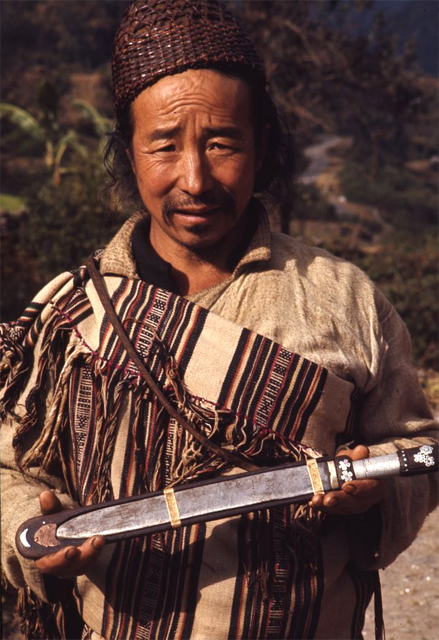A fascinating research report about a project intended to strengthen the indigenous knowledge systems of the Himalayan peoples, including the Lepchas, was published in June 2018. A news report dated August 31 prompts interest in the report. The research study was designed to reinforce traditional systems of providing foods in the mountains by focusing on the biocultural heritage of the communities being studied, their biodiversity, their spiritual and cultural values, and their landscapes. The full report, prepared by a research team sponsored by the International Institute for Environment and Development (IIED) in London, is well worth careful study.

The research focused on two places in northern India: the Central Himalayas and the Eastern Himalayas. The Eastern Himalayas study area was in the Kalimpong District of West Bengal state, and it included five Lepcha and Limbu villages near the border with Sikkim. The aim of the project, in part, was to study and to strengthen the traditional food systems of the indigenous people and to reinforce the cultural attributes of the societies so that they can better adapt to widespread changes such as the changing global climate. The researchers feel it is essential for the people to preserve their indigenous cultures as well as to improve their farming systems.
In the Kalimpong District, the researchers selected two Limbu communities to work with and three Lepcha villages, which they name: Lingsey, Lingseykha, and Tandrabong. The names of the first two signify the original beliefs of the people—Lingsey and Lingseykha originally meant “place of worship”—while Tandrabong means “drumming,” as in drumming during rituals.
Called the Smallholder Innovation for Resilience (SIFOR) project, the report terms their work as “biocultural heritage,” meaning the traditional knowledge in the study communities interconnected with spiritual values, landscapes, biodiversity, food resources, plus cultural and religious values. All are described in careful detail in this useful report. “Knowledge of trees, crops, animals and home-based health remedies still play a very important part in peoples’ lives and survival,” the authors write (p.12).

An overview of Lepcha culture suggests that they still preserve their strong connections with the natural features that surround them—the mountains, the rocks, the lakes. They also remain connected with their ancestors. The Lepcha still consider themselves to be descendants of their sacred mountain, Mt. Kanchenjunga. They relate the landscape with their ancestors and the natural systems with their spiritual beliefs. In sum, their traditional beliefs and ways, their rituals and practices, form essential connections with their beliefs in solidarity, reciprocity, collective actions and with the natural world that surrounds them.
In the Lepcha villages, the Bungthings, the priests, keep endangered species of plants in their homestead gardens for ritual purposes. The Lepcha believe that they have so much knowledge of natural plants and the habits of wildlife that they will never face starvation. No matter what may happen to their organized agriculture, they will always be able to find something in nature that they can eat.

The researchers investigated the issue of cultural changes in the study communities. They found that the Lepcha villages are experiencing some losses in the use of their language because Nepali, which dominates the district, has become the common language among all the ethnic communities. They note, however, that 100 percent of the people in the Lepcha households in the Lingsey-Lingseykha villages can still speak their language, even though Nepali is the dominant tongue. However, only 50 percent of the Lepchas in those two villages can write in their native language. Some efforts are being made to revive Lepcha language instruction in the primary schools.
The authors note that traditional styles of home construction have mostly been abandoned. Thatch roofing has been almost completely replaced by tin roofs. Only one traditional house remains in Lingsey, though it is well maintained. People have discussed building another, perhaps as a draw for tourists, but nothing has happened yet.
The consumption of traditional foods has also declined to the point where they are now eaten only on ceremonial occasions and weddings. Many traditional recipes have been lost in recent decades. One change that has occurred in the last three decades is that slash and burn agriculture is no longer being practiced. Farmers still use bullocks for plowing, though the number of the large animals is declining.

However, traditional collective activities, festivals, and beliefs are still practiced avidly. The investigators found that 100 percent of the Lepcha men and women participated in collective community activities, a trend that has remained stable in recent decades in Lingsey-Lingseykha. However, the numbers of participants have declined in Tandrabong village to 80 percent of the households.
Lepcha women continue to wear their traditional clothing on a daily basis but the men only wear their traditional garb on special occasions such as holidays and ceremonial occasions. But the controversial creation of the Mayel Lyang Lepcha Development Board (MLLDB) by West Bengal State Chief Minister Mamata Banerjee in 2013 has evidently done a lot to revive interest in the traditional language and dress. Many more men, the report points out, have recently resumed wearing the original Lepcha men’s hats.

While the tradition of sharing resources has continued at the village level, an interesting development has been the growth of what are called “Self Help Groups.” The SHGs, which are formally supported by the communities, are helping the villagers gain access to various government resources. The state government of West Bengal has, in turn, become a major stakeholder in promoting the SHGs. The MLLDB is encouraging community activities such as language preservation, preserving traditional rituals, publishing magazines, and organizing cultural festivals.
The authors have provided a service for the Lepchas—plus the Limbus and the Central Himalayan societies as well—in describing where they are and suggesting things they might do to preserve and enhance not only their food security but also their cultural integrity.
Mukerjee, Prakriti, Reetu Sogani, Nawraj Gurung, Ajay Rastogi and Krystyna Swiderska. 2018. Smallholder Farming Systems in the Indian Himalayas: Key Trends and Innovations for Resilience. London: International Institute for Environment and Development, IIED Country Report, 68 p. PDF available at http://pubs.iied.org/pdfs/17618IIED.pdf